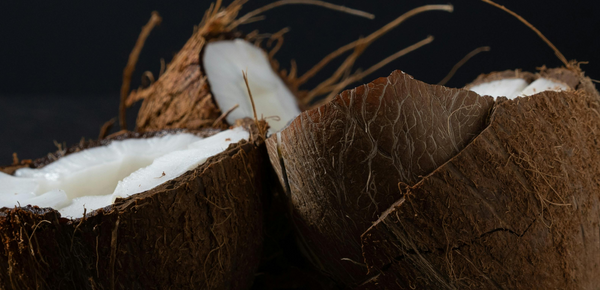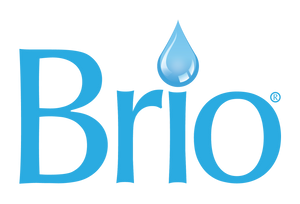Water is essential for life, but unfortunately, it's not always as clean and pure as we'd like it to be. From chlorine to pesticides, tap water can contain a variety of contaminants that may affect our health and well-being. That’s where an activated carbon water filter comes in.
Here, we explore the role of activated carbon in water filtration, how it works to remove impurities, and why we use sustainable coconut activated carbon to keep your water clean and safe to drink.

What is activated carbon?
Activated carbon, also known as activated charcoal, is a form of carbon that has been processed to increase its surface area and porosity. This increased surface area makes activated carbon highly adsorbent, allowing it to trap and remove impurities from gasses and liquids. (An adsorbent (with a ‘d’ not ‘b’) attracts moistures and holds it like a magnet on its surface, unlike an absorbent, which soaks up liquid.)
Activated carbon is produced by heating carbon-rich materials, such as wood, coal, coconut shells, or petroleum-based substances, at high temperatures in the absence of oxygen. This process, known as activation, creates a network of pores and increases the surface area of the carbon, sometimes reaching several hundred square meters per gram.

The porous structure of activated carbon enables it to adsorb a wide range of contaminants, which makes it ideal for water purification. The Brio Stage-2 Pre Carbon Filter uses granular activated carbon (GAC) – also known as pre carbon – which has a consistency similar to sand. Like granulated sugar or salt, the surface area of granulated carbon is massively expanded.
The Brio Stage 2 Carbon Block Filter and Brio Stage-3 Post Carbon Filter use the same coconut carbon, but compressed into block form. Carbon block has an even higher level of filtration refinement than ‘pre carbon’, and creates a greater surface area for the water to filter through.
What is activated carbon used for?

The use of activated carbon dates back thousands of years. Ancient civilizations, including the Egyptians and Greeks, are believed to have used charcoal for medicinal and purification purposes.
Historically, activated carbon was used to filter and purify water and treat various ailments due to its adsorption properties. For example, ancient Egyptians reportedly used charcoal to treat intestinal disorders, while ancient Hindus and Greeks used it for filtering water and purifying air.
The widespread use of activated carbon expanded significantly during the 20th century with advancements in manufacturing processes and technology. Today, activated carbon is used in various industries, including water treatment, air purification, food and beverage processing, pharmaceuticals, and environmental remediation. Its effectiveness in adsorbing a wide range of contaminants has made it an indispensable tool for ensuring cleaner air and water and improving overall public health and safety.
In modern water filtration systems, activated carbon filters are commonly used to remove taste, odor, and certain types of pollutants from tap water. The activated carbon adsorbs the contaminants as the water passes through the filter, resulting in cleaner and better-tasting water.
How is post carbon different from pre carbon filtration?
Brio’s advanced water filtration systems have several stages, depending on your needs.
Pre carbon and post carbon filtration are two different stages in the water filtration process that serve distinct purposes, and come after the stage 1 sediment filter:
- Stage 1 sediment filter, which removes rust, dust and dirt.
- Stage 2 pre carbon: an activated carbon filter, which handles chlorine.
- Stage 3 post carbon: an activated carbon block to ensure a pure, clean taste.

While pre carbon filtration focuses on removing larger particles and initial contaminants from water, post carbon filtration serves as a secondary treatment to enhance water quality by addressing residual impurities and improving taste and odor. Together, these filtration stages contribute to producing clean, safe, and refreshing drinking water. Let’s take a look in a bit more detail.
Pre carbon filtration
- Pre carbon filtration refers to the initial stage of the filtration process, where water passes through a carbon filter before undergoing further treatment.
- In pre carbon filtration, activated carbon filters are typically used to remove larger particles, sediment, chlorine, and other contaminants that may affect the taste, odor, or appearance of water.
- This stage helps to protect subsequent filtration components and prolong their lifespan by reducing the load of impurities entering the system.
Post carbon filtration
- Post carbon filtration occurs after the primary filtration process, where water undergoes a secondary treatment with activated carbon filters.
- In post carbon filtration, activated carbon filters are used to remove residual impurities, odors, and tastes that may remain in the water after initial filtration.
- This stage further enhances water quality by adsorbing any remaining organic compounds, chlorine byproducts, volatile organic compounds (VOCs), and other contaminants.
- Post carbon filtration helps to ensure that water is clean, clear, and free from undesirable taste or odor.
Why should I choose an activated carbon filter?

Activated carbon filters offer several benefits when it comes to water filtration:
Effectively remove contaminants
Activated carbon filters for water are highly effective at removing a wide range of contaminants, including chlorine, volatile organic compounds (VOCs), pesticides, and heavy metals like lead and mercury. Additionally, activated carbon filters can improve the taste and odor of water by removing unpleasant flavors and smells.
Use with other water treatment methods
One common misconception about activated carbon filters is that they can remove all types of contaminants, including bacteria and viruses. While activated carbon is excellent at removing many chemical contaminants, it is not effective against microbial pathogens. For this reason, it's essential to use activated carbon filters in conjunction with other water treatment methods, such as ultrafiltration or reverse osmosis, to ensure the water is safe for consumption.
Kind to planet
One of the significant advantages of activated carbon filters is their environmental sustainability. Unlike some other water treatment methods, such as distillation, activated carbon filtration does not require the use of chemicals or excessive energy. Additionally, activated carbon is a renewable resource that can be derived from natural materials like coconut shells or wood.
By using activated carbon filters, you can reduce your reliance on single-use plastic water bottles, which contribute to pollution and environmental degradation. Instead of purchasing bottled water, which often comes from questionable sources and may not be any cleaner than tap water, investing in a quality activated carbon filter allows you to enjoy clean, great-tasting water straight from your tap while reducing your environmental footprint.
Why Brio uses coconut shell activated carbon

With its natural origin, superior adsorption capabilities, and eco-friendly properties, coconut shell activated carbon remains a key component in Brio’s commitment to providing high-quality water filtration solutions. Here are five reasons to go with activated coconut carbon shell:
1. Enhanced filtration
The porous structure of activated coconut shell carbon effectively traps and removes impurities, including chlorine, volatile organic compounds (VOCs), sediment, and other contaminants present in tap water.
2. Improved taste and odor
The adsorption properties of activated coconut shell carbon help to eliminate unpleasant tastes and odors from water, resulting in clean, fresh-tasting drinking water. By removing chlorine and other chemicals responsible for off-flavors and odors, Brio water filter systems enhance the overall quality of the water.
3. Chemical-free filtration
Activated coconut shell carbon provides a natural and chemical-free filtration solution, ensuring the purified water remains free from harmful residues and additives. This eco-friendly approach aligns with Brio’s commitment to sustainability and environmental responsibility.
4. Long-lasting performance
Activated coconut shell carbon is known for its durability and longevity, allowing Brio water filter systems to maintain consistent performance over an extended period. The high-quality activated carbon effectively retains its adsorption capacity, providing reliable filtration for clean and healthy drinking water.
5. Versatile
Brio water filter systems equipped with activated coconut shell carbon cartridges are suitable for countertop and undersink water filtration systems, activated coconut shell carbon ensures reliable and efficient water purification.
An activated carbon water filter is an excellent investment for anyone concerned about the quality of their drinking water. Not only do activated carbon filters effectively remove a wide range of contaminants, but they also improve the taste and odor of water without the need for harsh chemicals or excessive energy.
By choosing activated carbon filtration, you can enjoy clean, pure water while also doing your part to protect the environment.




